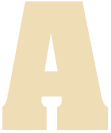
The University of Chicago Magazine
October-December 1996

 hether long with the elation of successfully completing the Campaign came the realization that its big finish was also a beginning of new challenges facing Chicago in its second century. Taking the long view, Lawrence Furnstahl, AB'83, vice president and chief financial officer of the University, says that "one can think of the University's faculty, students, and facilities as the long-term capital of the University. The Campaign represents a major new investment in the future strength and vitality of the institution."
hether long with the elation of successfully completing the Campaign came the realization that its big finish was also a beginning of new challenges facing Chicago in its second century. Taking the long view, Lawrence Furnstahl, AB'83, vice president and chief financial officer of the University, says that "one can think of the University's faculty, students, and facilities as the long-term capital of the University. The Campaign represents a major new investment in the future strength and vitality of the institution."Donors--whether alumni, foundations, corporations, or other friends--are another important part of the University's capital, and the Campaign did well by them, too. Cash gifts rose more than 50 percent during the Campaign, and giving among the College's alumni rose to nearly 40 percent, the fifth-highest rate in the country.
Both trends are encouraging, given the University's continuing needs. Although the U of C is $676 million stronger as a result of the Campaign, Chicago still needs to increase the value of its endowment relative to its peer institutions: As the campaign ended, the University's endowment ranked 16th in the nation. Yet endowment allows the flexibility needed to plan for the future: annual return from the endowment's investments fund a variety of University priorities, with a portion always reinvested to insure the endowment's continued growth. In addition to unrestricted endowment funds, more funds are needed for faculty endowments and student financial aid.
And there are facilities needs to be met. However, investments are needed to ensure that the U of C's buildings continue to meet the evolving needs of its academic and extracurricular programs. Future funds will underwrite the renovation of the Oriental Institute, the Physical Sciences Research Institutes, and the long-needed Athletics Complex.
With gifts from $100 to $5 million already earmarked for this complex--which will include an Olympic-size swimming facility to replace the tiny Bartlett pool, built in 1904--the desire to see it built is firmly on the front burner. "This is not frills and fancy stuff," President Hugo Sonnenschein emphasizes. "This facility is absolutely crucial to the quality of life on our campus and to our future ability to attract the world's most talented students and faculty.
"The campaign," Sonnenschein notes gratefully, "has given us a tremendous start" toward realizing the University's dreams for the next century. "Now we need to follow up."
Go to:
- INVESTIGATIONS
- CHICAGO JOURNAL
- EVENTS
- LETTERS
- CHICAGOPHILE
- Feature story, "The Strange Laboratory of Dr. LaBarbera"
- Feature story, "Strength in Numbers"
- Special Report, "Building a Strong Cornerstone"
- Feature story, "The Wirszup Factor"
- CLASS NEWS
- DEATHS
- BOOKS BY ALUMNI
- IN THE CLUBS
Return to October-December 1996 Table of Contents